Nyheter
Global X YieldCo Index ETF YLCO explained
Publicerad
9 år sedanden

Global X YieldCo Index ETF YLCO explained Global X CEO Bruno del Ama explains the ETF Providers YieldCo Index ETF YLCO.
Carefully consider the funds’ investment objectives, risk, and charges and expenses. This and other information can be found in the funds’ prospectus.
This information is not an offer to sell or a solicitation of an offer to buy shares of any Fund to any person in any jurisdiction in which an offer, solicitation, purchase or sale would be unlawful under the securities laws of such jurisdiction.
Shares are bought and sold at market price (not NAV) and are not individually redeemed from the Fund. Brokerage commissions will reduce returns.
Global X Management Company LLC serves as an advisor to Global X Funds. The Funds are distributed by SEI Investments Distribution Co. (SIDCO), which is not affiliated with Global X Management Company LLC. Global X Funds are not sponsored, endorsed, issued, sold or promoted by Solactive AG, FTSE, Standard & Poors, NASDAQ, S-Network, Indxx, or MSCI nor do these companies make any representations regarding the advisability of investing in the Global X Funds. Neither SIDCO nor Global X is affiliated with Solactive AG, FTSE, Standard & Poors, NASDAQ, S-Network, Indxx, or MSCI.
Investing involves risk, including the possible loss of principal.
International investments may involve risk of capital loss from unfavorable fluctuation in currency values, from differences in generally accepted accounting principles, or from economic or political instability in other nations. Emerging markets involve heightened risks related to the same factors as well as increased volatility and lower trading volume. Greece’s economy is heavily dependent on the services sector and has a large public sector. Key trading partners are member states of the EU, most notably Germany, Spain, Italy and the United Kingdom. Decreasing demand for Greek products and services or changes in governmental regulations on trade may have a significantly adverse effect on Greece’s economy. Greece’s ability to repay its sovereign debt is in question, and the possibility of default is not unlikely.
Securities focusing on a single country, small- and mid-capitalization companies, and narrowly focused investments may be subject to higher volatility.
There are additional risks associated with investing in base and precious metals as well as their respective mining industries.
Investments in securities in the Technology sector are subject to rapid changes in technology product cycles; rapid product obsolescence; government regulation; and increased competition, both domestically and internationally, including competition from foreign competitors with lower production costs. Technology companies and companies that rely heavily on technology tend to be more volatile than the overall market, and are also heavily dependent on patent and intellectual property rights.
Preferred stock is subject to many of the risks associated with debt securities, including interest rate risk. As interest rates rise, the value of the preferred stocks held by the Fund are likely to decline. In addition, preferred stock may not pay a dividend, an issuer may suspend payment of dividends on preferred stock at any time, and in certain situations an issuer may call or redeem its preferred stock or convert it to common stock. High yielding stocks are often speculative, high risk investments. These companies can be paying out more than they can support and may reduce their dividends or stop paying dividends at any time, which could have a material adverse effect on the stock price of these companies.
Securities in the SOIL portfolio may be significantly subject to the effects of competitive pressures in the fertilizer industry and the price of fertilizer commodities. These prices may fluctuate substantially over short periods of time so SOIL`s share price may be more volatile than other types of investments. In addition, fertilizer companies may also be significantly affected by import controls, worldwide competition, liability for environmental damage, depletion of resources, and mandated expenditures for safety and pollution control devices.
SOCL invests in securities of companies engaged in the social media industry, including companies that provide social networking, file sharing, and other web-based media applications. The risks related to investing in such companies include disruption in service caused by hardware or software failure, interruptions or delays in service by third-party data center hosting facilities and maintenance providers, security breaches involving certain private, sensitive, proprietary and confidential information managed and transmitted by social media companies, and privacy concerns and laws, evolving Internet regulation and other foreign or domestic regulations that may limit or otherwise affect the operations of such companies. Furthermore, the business models employed by the companies in the social media industry may not prove to be successful.
Investments in securities of MLPs involve risk that differ from investments in common stock including risks related to limited control and limited rights to vote on matters affecting the MLP. MLP common units and other equity securities can be affected by macro-economic and other factors affecting the stock market in general, expectations of interest rates, investor sentiment towards MLPs or the energy sector, changes in a particular issuer’s financial condition, or unfavorable or unanticipated poor performance of a particular issuer (in the case of MLPs, generally measured in terms of distributable cash flow). The 13F filings used to select the securities in the Top Guru Holdings Index are filed by each hedge fund approximately 45 days after the end of each calendar quarter. Therefore a given hedge fund may have already sold its position by the time of the 13F filing. The selection of holdings is not based upon performance of the underlying hedge funds.
Bonds will lose value as interest rates rise.
PERM invests in gold ETFs/ETCs. The return from investments in gold will be derived solely from the price gains or losses from the commodity. Gold may also be significantly affected by developments in the gold mining industry and prices of gold may fluctuate sharply over short periods of time. REITs are particularly vulnerable to decline in the event of deflationary economic conditions, and are subject to interest rate risk, leverage risk, property risk and management risk. The Fund may hold ETFs. As a result, the Fund is subject to the same risks as the underlying ETFs.
Investments in securities of MLPs involve risk that differ from investments in common stock including risks related to limited control and limited rights to vote on matters affecting the MLP. The fund invests in the energy industry, which entails significant risk and volatility. MLP common units and other equity securities can be affected by macro-economic and other factors affecting the stock market in general, expectations of interest rates, investor sentiment towards MLPs or the energy sector, changes in a particular issuer’s financial condition, or unfavorable or unanticipated poor performance of a particular issuer (in the case of MLPs, generally measured in terms of distributable cash flow). Due to the nature of the Fund’s investments, the Fund will be subject to taxation on its taxable income. The NAV of Shares will also be reduced by the accrual of any deferred tax liabilities. The Underlying Index however is calculated without any deductions for taxes. As a result, the Fund’s after tax performance could differ significantly from the Underlying Index even if the pretax performance of the Fund and the performance of the Underlying Index are closely correlated. The fund is non-diversified. Certain distributions are expected to be treated as a return of capital for tax purposes rather than from net profits and shareholders should not assume that the source of distributions is from the net profits of the fund.
Bonds will lose value as interest rates rise. PERM invests in gold ETFs/ETCs. The return from investments in gold will be derived solely from the price gains or losses from the commodity. Gold may also be significantly affected by developments in the gold mining industry and prices of gold may fluctuate sharply over short periods of time. REITs are particularly vulnerable to decline in the event of deflationary economic conditions, and are subject to interest rate risk, leverage risk, property risk and management risk. The Fund may hold ETFs. As a result, the Fund is subject to the same risks as the underlying ETFs.
Global X and SEI Investments Distribution Co. do not sponsor the opinions or information presented in articles, nor do they assume liability for any loss that may result from relying on these opinions or information. The material is not intended as individual or personalized investment advice.
Du kanske gillar
-
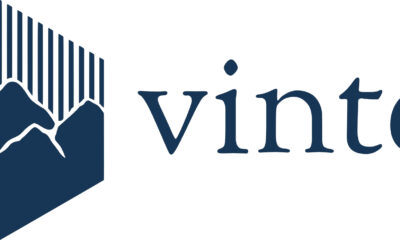

Vinter träffar Global X och pratar om tillväxten för ETFer i Europa
-


Global X lanserar tre nya kryptoprodukter
-
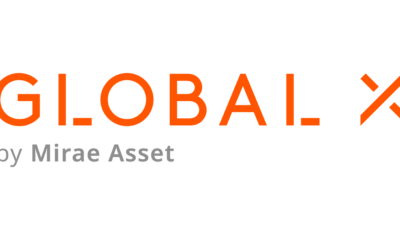

Global X utökar säljteamet i Europa med dubbla rekryteringar
-


Global X ETFs utökar sitt sortiment tematiska UCITS ETFer i Schweiz
-
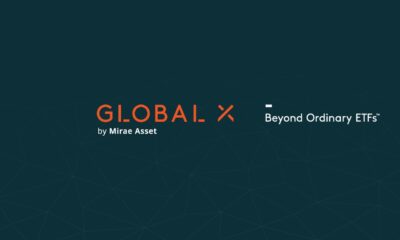

Global X lanserar tre nya ETFer på Nasdaq
-


Sex missuppfattningar om tematisk investering
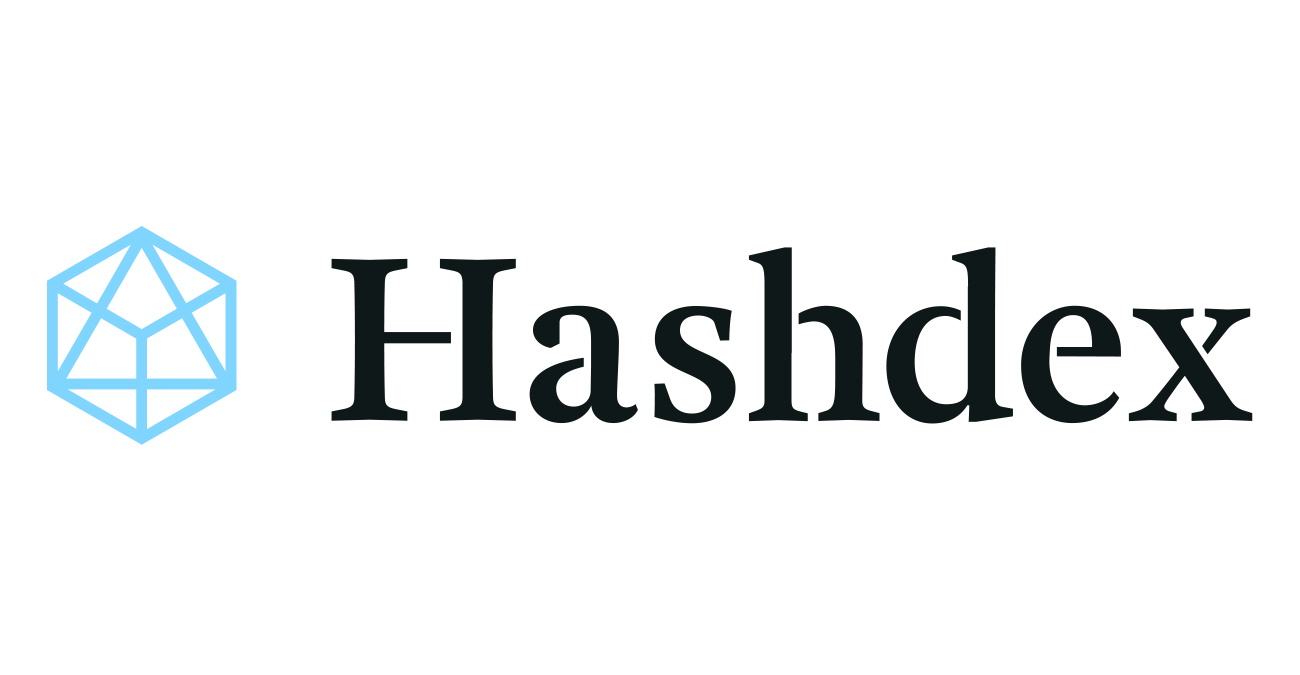
I en nyligen genomförd Coindesk-intervju lyfte Blackrock fram institutionaliseringen av tillgångsklassen eftersom de förväntar sig en ny våg av investerare, särskilt från stats- och pensionsfonder, som är redo att öka efterfrågan under de kommande månaderna. Som nämnts regelbundet för våra läsare, är denna dynamik precis vad vi förväntar oss och vi ser denna institutionalisering som en viktig drivkraft för kryptotillgångar som kryptoindex ETPer.
Utveckling (USD) i slutet av april 2024
Beta Index ETP – Nasdaq Crypto Index Europe ETP (HASH eller HDX1): April -16%, YTD +35% och 12m +87%.
Smart-Beta Index ETP – Crypto Momentum Factor Index ETP (HAMO eller HDXM): April -23%, YTD -3% och 12m +60%.
Marknadsuppdatering
Efter 7 månader av uppgångar i rad såg kryptomarknaden sin första nedgång sedan augusti 2023, med Nasdaq Crypto Index Europe (”NCIE”) som sjönk med 16% i april, men bibehöll en ökning med 35% för året. Trots globala geopolitiska utmaningar är utsikterna för kryptotillgångar fortsatt positiva, främst drivna av ett fortsatt institutionellt intresse.
April markerade den mycket efterlängtade bitcoin-halveringen, som såg att gruvbelöningarna halverades, vilket underströk dess utbud och efterfrågan. Historiska trender tyder på en effekt efter halvering, nu förstärkt av framsteg i amerikanska ETF-flöden. Vårt forskarteam har fördjupat sig djupare i detta fenomen i vår rapport: Hashdex Research – Bitcoin’s Halving: An investor’s guide.
NCIE i förhållande till andra tillgångsslag

Källa: Hashdex, per den 30/04/24.
I det globala sammanhanget stötte index över olika tillgångsklasser på en utmanande månad. Oro för potentiellt förlängda höga räntor i USA ledde till marknadsturbulens, vilket resulterade i negativa utfall över nästan alla index. Av särskild betydelse var S&P 500, som noterade en nedgång på över 4 % för månaden.
April månad
- Nasdaq Crypto Index Europé

Källa: Hashdex, per den 30/04/24.
Indexet påverkades övervägande av Bitcoin och Ethereum, och upplevde nedgångar på -13,4% respektive -18,6%. Samtidigt såg alla andra komponenter i NCIE fall över 24%. Uniswap, i synnerhet, drabbades av betydande turbulens efter ett meddelande från SEC:s Enforcement Division till Uniswap Labs, vilket resulterade i en brant minskning med 42 %.
- Crypto Momentum Factor Index:
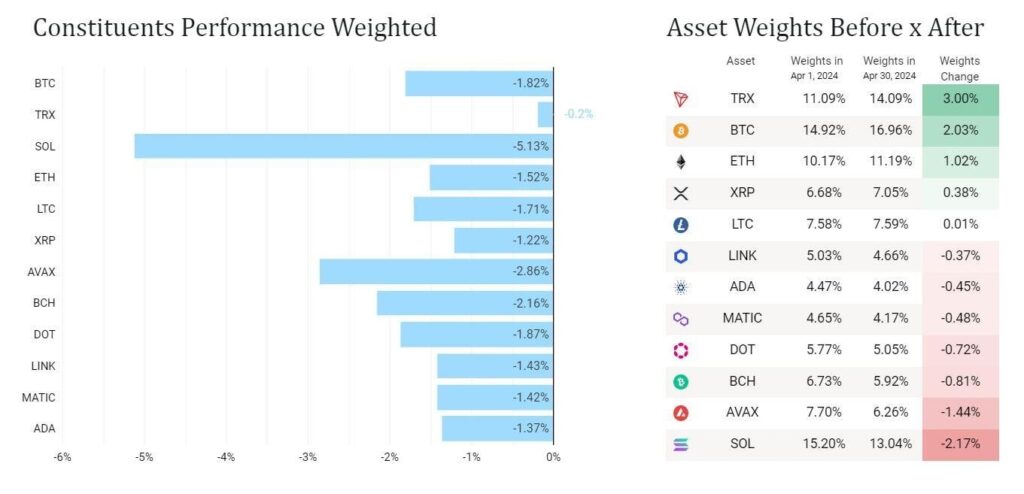
Källa: Hashdex, per den 30/04/24.
In i maj, med sin månatliga ombalansering, lade Momentum Index till en ny tillgång: NEAR Protocol, en decentraliserad utvecklingsplattform som använder en Proof-of-Stake (PoS) konsensusmekanism, kommer att introducera en sönderdelad arkitektur för förbättrad transaktionskapacitet. Hittills har priset stigit med 68 % i år.
3 månaders daglig avkastning korrelation Nasdaq Crypto Index Europe vs S&P 500

Källa: Hashdex, per den 30/04/24.
Hashdex Nasdaq Crypto Index Europe ETP – dokumentation
ISIN: CH1184151731 / Tickers: HASH (SIX och Euronext) eller HDX1 (Xetra) – handlas i USD, EUR, CHF och GBP
Hashdex Crypto Momentum Factor ETP – dokumentation
ISIN: CH1218734544 / Tickers: HAMO (SIX och Euronext) eller HDXM (Xetra) – handlas i USD, EUR, CHF och GBP
Nyheter
XD5E ETF en utdelande fond som köper aktier från Eurozonen
Publicerad
18 timmar sedanden
9 maj, 2024
Xtrackers MSCI EMU UCITS ETF 1D (XD5E ETF) investerar i aktier med fokus på Europa. Utdelningarna i fonden delas ut till investerarna (Årligen). MSCI EMU möjliggör en bred investering med låga avgifter på ca. 230 aktier.
Den totala kostnadskvoten uppgår till 0,12 % p.a. Fonden replikerar det underliggande indexets utveckling genom att köpa alla indexbeståndsdelar (full replikering). Xtrackers MSCI EMU UCITS ETF 1D är en mycket stor ETF med tillgångar på 1 276 miljoner euro under förvaltning. XD5E ETF är äldre än 5 år och har sin hemvist i Luxemburg.
Investeringsstrategi
MSCI EMU-index följer stora och medelstora aktier från länder i Europeiska ekonomiska och monetära unionen.
Indexbeskrivning
MSCI EMU-index syftar till att spegla resultatet på följande marknad:
Stora och medelstora företag från utvecklade EMU-marknader
Täcker cirka 85 % av det fria marknadsvärdet
Viktad med fritt flytande justerat börsvärde
Granskas kvartalsvis
Handla XD5E ETF
Xtrackers MSCI EMU UCITS ETF 1D (XD5E ETF) är en europeisk börshandlad fond. Denna fond handlas på Deutsche Boerse Xetra och London Stock Exchange.
Det betyder att det går att handla andelar i denna ETF genom de flesta svenska banker och Internetmäklare, till exempel DEGIRO, Nordnet, Aktieinvest och Avanza.
Börsnoteringar
| Börs | Valuta | Kortnamn |
| gettex | EUR | XD5E |
| Stuttgart Stock Exchange | EUR | XD5E |
| Borsa Italiana | EUR | XD5E |
| London Stock Exchange | GBX | XD5E |
| SIX Swiss Exchange | CHF | XD5E |
| XETRA | EUR | XD5E |
Största innehav
| ISIN | Namn | Vikt % | Land | Sektor |
| NL0010273215 | ASML HOLDING ORD | 5.21% | Netherlands | Information Technology |
| FR0000121014 | LVMH MOET HENNESSY LOUIS VUITT | 4.33% | France | Consumer Discretionary |
| FR0000120271 | TOTALENERGIES SE ORD | 2.80% | France | Energy |
| FR0000120578 | SANOFI SA ORD | 2.64% | France | Health Care |
| DE0007164600 | SAP SE ORD | 2.21% | Germany | Information Technology |
| FR0000120321 | L OREAL S.A. | 2.01% | France | Consumer Staples |
| DE0007236101 | SIEMENS ORD | 1.91% | Germany | Industrials |
| FR0000121972 | SCHNEIDER ELECTRIC SE | 1.71% | France | Industrials |
| DE0008404005 | ALLIANZ SE ORD | 1.67% | Germany | Financials |
| FR0000120073 | AIR LIQUIDE ORD | 1.64% | France | Materials |
| NL0000235190 | AIRBUS SE | 1.43% | Netherlands | Industrials |
| ES0144580Y14 | IBERDROLA SA | 1.41% | Spain | Utilities |
| DE0005557508 | DEUTSCHE TELEKOM AG ORD | 1.40% | Germany | Communication Services |
| DE000BAY0017 | BAYER AG | 1.32% | Germany | Health Care |
| NL0013654783 | PROSUS NV ORD | 1.29% | Netherlands | Consumer Discretionary |
Innehav kan komma att förändras
Nyheter
Bitcoin’s Volatility and Stablecoin’s Market Viability: What Happened in Crypto This Week?
Publicerad
2 dagar sedanden
8 maj, 2024
• Bullish, Bearish, or Both? Macro Mayhem Leads to Bitcoin Volatility
• Bitcoin’s Institutional Embrace is Accelerating
• Beyond Borders and Banks: Stablecoins Proving their Market Viability
Macro Mayhem Leads to Bitcoin Volatility
Last week, Bitcoin navigated a wave of conflicting U.S. macroeconomic events. The FOMC press conference last Wednesday confirmed the Fed will sustain high interest rates at 5.25-5.5% as the challenge of achieving the inflation target persists. As shown in Figure 1, this initially triggered Bitcoin’s price to drop by 5.9% as investors sought the safety of fixed-income assets. Friday’s U.S. Jobs report reversed the negative sentiment from the FOMC meeting. The report revealed a disappointing labor market, with only 175,000 non-farm jobs added, as unemployment rose to 3.9%. This data fueled hopes for rate cuts, which bodes well for risk-on assets, which led to Bitcoin rebounding by 6.7% to ~$63,000 by week’s end.
Figure 1: Bitcoin 1 Week Price Performance (April 29, 2024 – May 6, 2024)
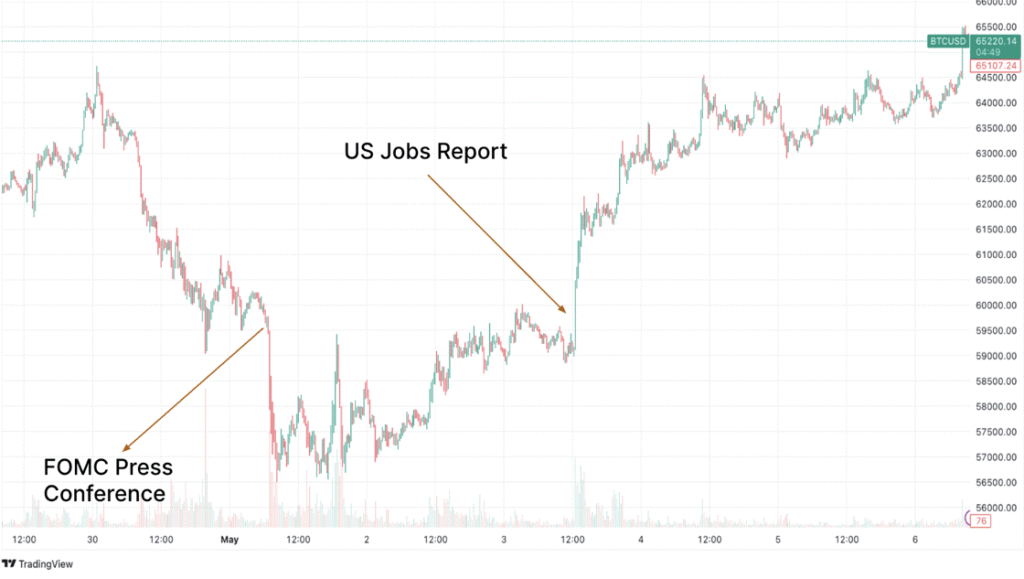
Source: TradingView
Looking ahead, several developments could provide tailwinds for Bitcoin. The upcoming Treasury buyback program, the first since 2002, is launching on May 29 and has several implications for the broader financial landscape. By conducting weekly bond buybacks of up to $2 billion, outstanding debt is reduced while liquidity is increased, which could allow capital to flow into riskier assets. The reduced bond supply also puts downward pressure on yields, potentially making Bitcoin more attractive.
The recent Treasury refinancing announcement also looks promising for Bitcoin. A lower target balance for the Treasury General Account (TGA) suggests the government needs to borrow less, which frees up capital. The impact could be compared to quantitative easing, instead of withdrawing liquidity from the market by selling new bonds, the Treasury effectively injects liquidity by not needing to borrow as much. This additional liquidity eventually reaches the banking system, potentially leading to easier access to credit and lower interest rates. As we have voiced throughout, this environment would benefit riskier assets like Bitcoin.
Despite the initial price drop triggered by the Fed’s hawkish stance on interest rates, Bitcoin’s resilience was evident in its subsequent rebound driven by a weakening labor market and the potential prospect of a dovish shift. As illustrated below, Bitcoin’s funding rate is now similar to when it was trading at around $29,000, which signals a healthy market adjustment, shedding excess leverage. Looking ahead, the upcoming Treasury actions will undoubtedly affect U.S. liquidity and interest rate levels, which are key to Bitcoin’s performance and will be closely monitored in the coming weeks.
Figure 2: Bitcoin’s Funding Rate

Source: Glassnode
Bitcoin’s Institutional Embrace is Accelerating
Fueled by the U.S. Bitcoin ETF launch, the institutional adoption of Bitcoin is accelerating. A staggering $175 billion is estimated to be held by ETFs, countries, and public and private companies, representing roughly 15% of the total Bitcoin supply. While miniscule compared to the U.S. launch, Hong Kong’s Bitcoin ETFs further exemplify this trend, accumulating 4.2K BTC, or nearly $270 million, within their first week of trading. This showcases the growing appetite for the asset, however the hunger for Bitcoin is not limited to Hong Kong. Ovata Capital Management’s $60 million allocation into the U.S. spot ETFs underscores this trend, which is set to continue as the May 15 deadline for 13F filings approaches, which may reveal previously undisclosed positions held by institutions.
Recent disclosures by BNY Mellon and BNP Paribas, along with Swiss funds Bellecapital International and Lugano Financial Advisors, provide further evidence of Bitcoin’s institutionalization. Moreover, according to BlackRock, the world’s largest sovereign wealth funds (SWFs), including Norway’s $1.6 trillion fund, Saudi Arabia’s Public Investment Fund, and Kuwait’s Investment Authority, are re-initiating discussions around Bitcoin. The SWF industry is valued at $11.6 trillion, therefore even a moderate allocation into the asset could see demand catapult to new levels, and provide a tipping point for broader adoption. Importantly, it is becoming more difficult to discount the asset – Bitcoin’s unique profile as both a risk-on and risk-off asset is becoming increasingly relevant given the complex macroeconomic landscape.
Further, Bitcoin’s adoption is transcending passive investment strategies. For instance, fintech giant Nubank, housing 80 million users, now offers crypto deposits and withdrawals, aiming to bridge the gap between traditional finance and crypto in Latin America. Lastly, Microstrategy, synonymous with their commitment to Bitcoin, are pushing the boundaries further by building an identity solution on the Ordinals network. This exemplifies the use of Bitcoin beyond a decentralized payment system, a notion we have echoed in the past weeks as Bitcoin continues to evolve beyond its original purpose.
Finally, the coming weeks promise further clues on the US economic trajectory and Bitcoin institutional adoption. There are eight Fed speaker events this week, and while they don’t directly address crypto, they often offer valuable insights into the current economic conditions. This, coupled with the turbulence expected during Q1 earnings season, could create volatility in equity markets, which may spill over to crypto as investors react accordingly.
Beyond Borders and Banks: Stablecoins Proving their Market Viability
After a six-year hiatus, Stripe is re-entering the crypto industry by enabling customers to accept stablecoins for online payments. Stripe was among the pioneers in integrating Bitcoin back in 2014. However, they ceased support in 2018 due to Bitcoin’s prolonged processing times and high transaction costs, which didn’t present a significant improvement over its traditional counterpart. Since then, the industry has undergone a major transformation, with the emergence of numerous smart-contract platforms and scaling efforts, enhancing the potential of crypto’s infrastructure to offer a superior user experience.
For instance, Stripe’s co-founder showcased a $100 USDC payment using Solana at the company’s annual conference. The demo corroborated how the payment was processed in less than a second instead of days while incurring $0.0037 in network fees, a cost reduction of almost 800-fold compared to a credit card. This is a testament to the advancements achieved by the latest generation of platforms, such as Solana, which addressed some of the drawbacks, like high transaction costs and lengthy processing times, while demonstrating their efficacy for use cases requiring a high volume of interactions, such as payments.
To that end, Stripe will begin supporting USDC payments through Ethereum, Solana, and Polygon. This integration marks a significant milestone, given Stripe’s substantial 35% market share in the payments industry. However, it’s even more crucial as users can seamlessly leverage the efficiencies of crypto’s infrastructure, ensuring reduced transaction costs and notably swifter processing times while remaining unaware of the use of blockchain technology in the backend. This mirrors how users are often unaware of the payment infrastructure their preferred fintech apps utilize. At 21Shares, we firmly believe that this kind of seamless integration is imperative for the widespread adoption of crypto.
That said, while Tether leads by market capitalization with $110 billion compared to USDC’s $33 billion, USDC actually dominates in terms of usage when looking at transaction volume. According to Visa’s latest on-chain analytical dashboard aiming to dissect the growth of the stablecoin sector, USDC is now responsible for more than 70% of all stablecoin payments, as illustrated below. As we’ve emphasized for years, exemplified by our own work on Dune, on-chain analytics represents the future of capital markets. It offers unparalleled transparency and real-time data access, unlike traditional industries reliant on periodic disclosures of quarterly financials. Therefore, Visa’s active engagement in on-chain analytics marks a watershed moment, reaffirming our long-held belief that this is the path forward.
Figure 3: Stablecoins Monthly Transaction Volume
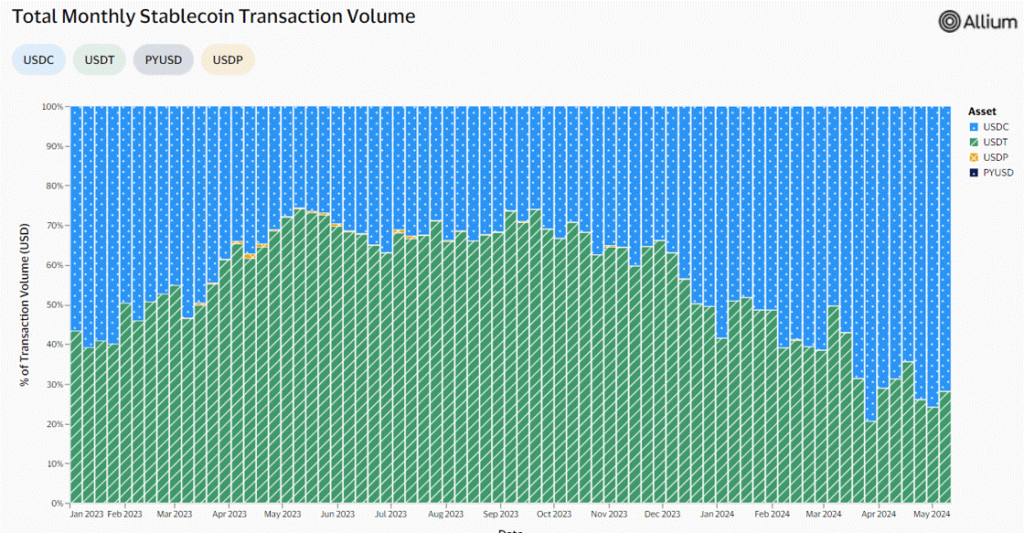
Source: Alluvium X Visa
Despite USDC’s widespread adoption, Tether has achieved remarkable financial success in Q1. The company raked in a staggering $4.52B in profits by strategically deploying user deposits into U.S. treasury and repurchase agreements. The exposure to debt, coupled with rising Bitcoin and Gold prices, has proven to be a lucrative formula. As a result, Tether’s net profit now eclipses that of financial giants like Citibank, Goldman Sachs, and Morgan Stanley, highlighting the burgeoning business potential of the fiat-backed stablecoin model.
Further, characterized by its disintermediated structure and emphasis on user experience, stablecoins have proven themselves as a viable alternative within the financial landscape. They are arguably one of crypto’s most compelling use cases right now. Its significance becomes even more apparent in regions facing economic instability, where users turn to stablecoins as a swift means to access the U.S. dollar, safeguarding themselves against currency devaluation. Turkey serves as a notable case study, stablecoin transactions account for a remarkable 4% of the nation’s GDP, the highest proportion globally, at a time when the Turkish Lira lost more than 75% of its value against the U.S. dollar over the last 5 years.
Finally, Tether is intensifying its efforts by launching USDT on the TON blockchain, which is closely linked to Telegram. Despite TON’s recent rise in popularity with approximately 1.74M users, it aims to tap into Telegram’s vast 900M user base through its deep integration. This move could significantly expand the market for stablecoins, currently serving around 25M users. Moreover, this integration is a pivotal step in simplifying crypto usage, concealing its complexities, and paving the way for mass adoption.
This Week’s Calendar

Source: Forex Factory, 21Shares
Research Newsletter
Each week the 21Shares Research team will publish our data-driven insights into the crypto asset world through this newsletter. Please direct any comments, questions, and words of feedback to research@21shares.com
Disclaimer
The information provided does not constitute a prospectus or other offering material and does not contain or constitute an offer to sell or a solicitation of any offer to buy securities in any jurisdiction. Some of the information published herein may contain forward-looking statements. Readers are cautioned that any such forward-looking statements are not guarantees of future performance and involve risks and uncertainties and that actual results may differ materially from those in the forward-looking statements as a result of various factors. The information contained herein may not be considered as economic, legal, tax or other advice and users are cautioned to base investment decisions or other decisions solely on the content hereof.

Utvecklingen för Hashdex kryptoindex ETPer

XD5E ETF en utdelande fond som köper aktier från Eurozonen

Bitcoin’s Volatility and Stablecoin’s Market Viability: What Happened in Crypto This Week?

Endast en tredjedel av brittiska privatinvesterare har hört talas om ansvarsfulla investeringar eller ESG

C3AE ETF spårar det kinesiska A 300 Swap indexet

ETFmarknaden i Europa firar sitt 24-årsjubileum med tillgångar på två biljoner USD

Tillgång till obligationsmarknaden för företagsobligationer från utvecklade marknader

Vilken är den bästa fond som följer Nasdaq-100?

De mest populära börshandlade fonderna april 2024

Försvarsfond når förvaltad volym på 500 MUSD
Populära
-

 Nyheter3 veckor sedan
Nyheter3 veckor sedanETFmarknaden i Europa firar sitt 24-årsjubileum med tillgångar på två biljoner USD
-

 Nyheter4 veckor sedan
Nyheter4 veckor sedanTillgång till obligationsmarknaden för företagsobligationer från utvecklade marknader
-

 Nyheter2 veckor sedan
Nyheter2 veckor sedanVilken är den bästa fond som följer Nasdaq-100?
-

 Nyheter2 veckor sedan
Nyheter2 veckor sedanDe mest populära börshandlade fonderna april 2024
-

 Nyheter4 veckor sedan
Nyheter4 veckor sedanFörsvarsfond når förvaltad volym på 500 MUSD
-

 Nyheter5 dagar sedan
Nyheter5 dagar sedanNågra av de bästa guldfonderna
-

 Nyheter2 dagar sedan
Nyheter2 dagar sedanEndast en tredjedel av brittiska privatinvesterare har hört talas om ansvarsfulla investeringar eller ESG
-

 Nyheter2 veckor sedan
Nyheter2 veckor sedanU.S. Global Investors tar över HANetf Travel



